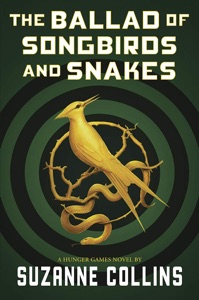The passion and care that animated The Hunger Games has been worn away by the sequels, the films and the hoopla. This prequel examines how the Hunger Games got started and how they became the reality show we all came to know. I had always thought that Collins could write a fine book about Mentors, and this novel tries.
The Katniss novel is told in the first person, which creates a technical problem: there’s lots that Katniss doesn’t know, and lots that she knows so well that she’d never give it a thought. Those constraints helped Collins build a rich world, one where much was half hidden in the shadows. This time, she sticks to third person, perhaps to provide some distance. There is, in the end, so much distance that the shadows are wiped away.
June 21, 2020 (permalink)





